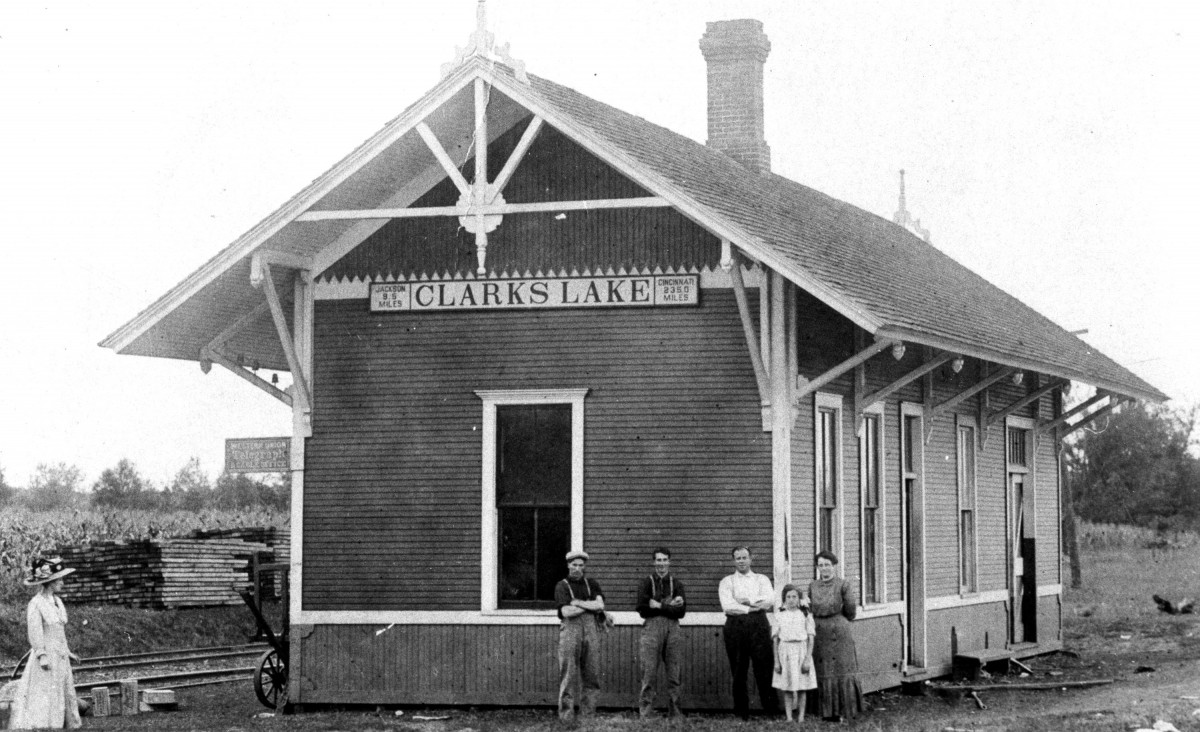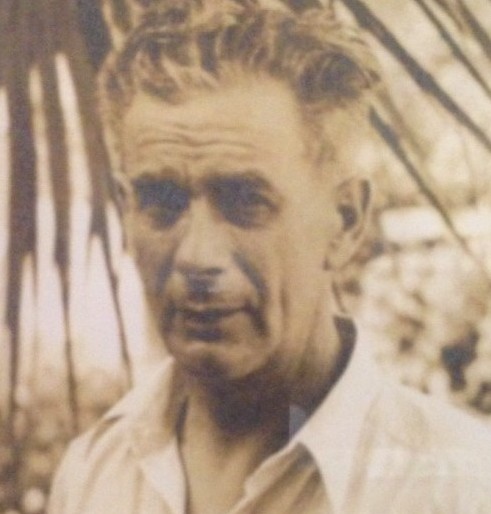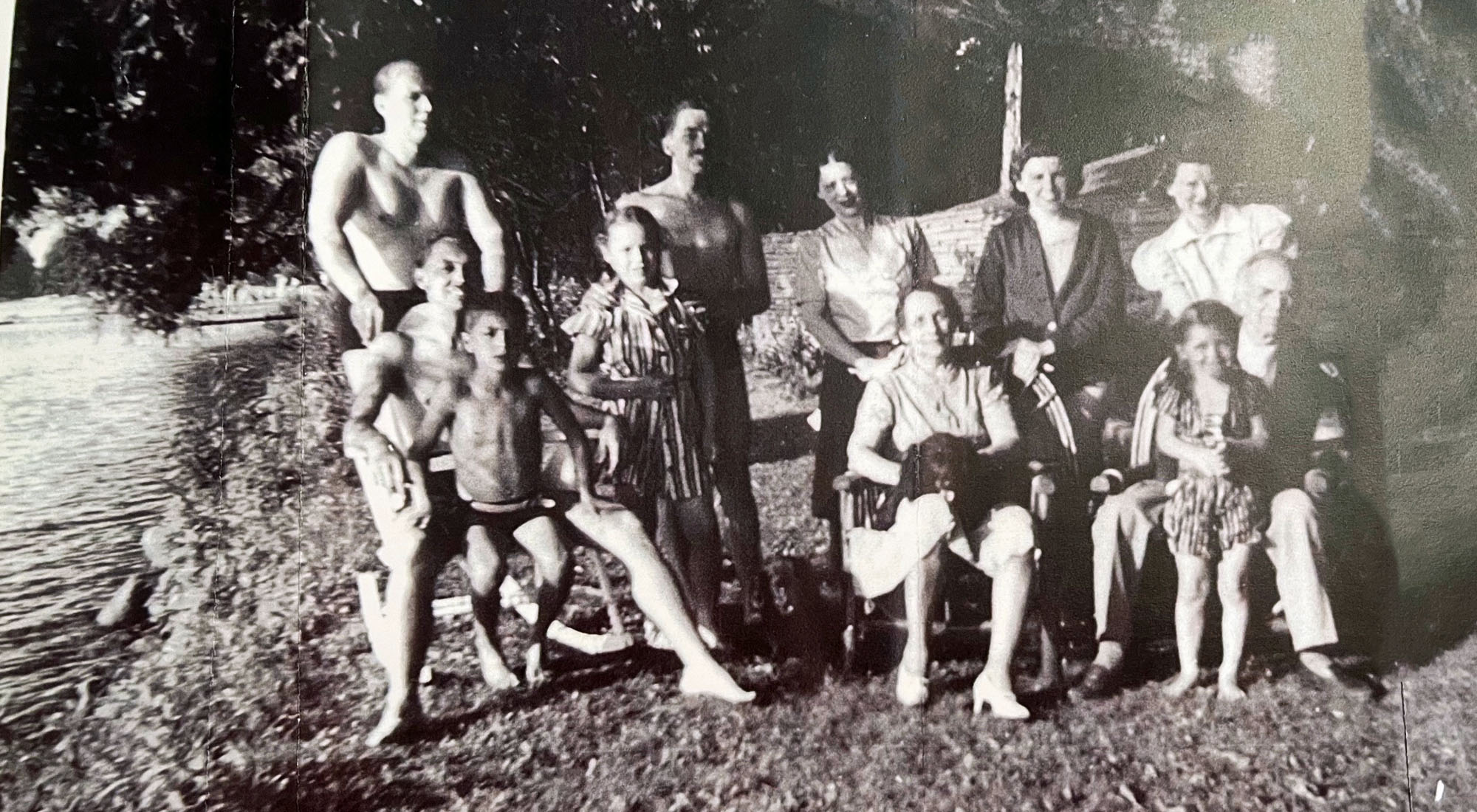My grandfather, Wayne Shawaker, was born in 1903 and started coming to Clarks Lake as a baby. I thought you might be interested to read a few of the stories and facts he told me. They provide some insight into life on the lake in the early 1900s. A lot of the activities for youngsters have not changed between then and now – swimming, fishing, catching turtles and frogs, boating, etc. But a few things have. (BTW, my grandfather always called it “Clarks Lake” as did my Dad, Steve. So it will always be “Clarks” to me, regardless of what Google Maps says.)

First, the picture above is of Wayne, his brother Ralph and their first cousin Koerner Leutz in about 1910. Beyond being relatives, these three stayed friends and loved Clarks Lake for their whole lives. As a boy, I remember the now old men stopping at our cottage to talk with Gramps around the dining room table or sit on the deck and watch the sunset. And I remember my grandfather walking over to the Koerner and Ralph cottages. There were only 5 cottages between ours and Koerner’s and Ralphs was also close – just on the opposite side of Eagle Point.

In 1916 L to R – Emma Schmidt Leutz holding Bob Shawaker. Boys in boat – Ralph & Wayne Shawaker, Koerner Leutz. Henry Leutz, Earl Larson, Florence Schmidt Larson, Ed Shawaker. (Photo: Louisa Schmidt Shawaker)
Traveling to Clarks from Toledo was a challenge in the early 1900s. I believe in his first couple years, Wayne and his family travelled by train to the station at the head of the lake, but he never talked about that much other than to explain how a passenger boat would then take summer visitors to their cottage or one of the hotels on the lake. He was probably too young to remember those train and boat rides himself.

But his father Edward became a fairly early auto owner and my grandfather frequently told the story of how getting the 65 miles from Toledo to Clarks was an all day adventure. Obviously, there were no highways or even paved roads in those days. Those early cars were slow and did not have powerful engines and Gramps told me that they had to back the car in reverse over some of the bigger hills because the car had more torque in reverse. It was common for the engine to overheat and they would need to stop and walk to the nearest farmhouse to get a bucket of water for the radiator. It was also common to blow out tires and have to put on one of the multiple spares they brought with them on each trip. The first time they drove all the way to Clarks without blowing a tire, the family literally celebrated the occasion.

Rolllo Every
My great-grandfather Edward would commute back and forth a couple times in the summer to work in Toledo, but like many families, my great grandmother Louisa and her 3 sons (Wayne, Ralph and Robert), would stay the whole summer. Consequently, Wayne made many friends around the lake and especially around Eagle Point. The families all knew each other. As an example, Gramps would tell the story of serving as best man for Rollo Every when he got married on a boat in the middle of the Lake. When I was a boy and young man, it seemed to me that to varying degrees Gramps knew every family in the cottages on either side of Eagle Point.
Wayne also knew some people in Brooklyn. I recall visiting Neely Lumber with Gramps one time and he seemed very friendly with the owner so I asked how they knew each other. He said they got to know each other at baseball games and that the Clark Lake boys would get together to play baseball on a diamond in the middle of Eagle Point. Several times each Summer some boys from Brooklyn would come out to play a game against the Clark Lake boys. (My impression is that these were just “pick up games” between the local boys, not any kind of formal organized team or league.)
Early on, the family bought their groceries and other needs from the wagons that would drive past all the cottages around the lake. These wagons each had their own specialty – ice, dairy, butcher, produce, clothing & household items, etc. There was a regularity to the wagon routes so you could plan to be near your cottage on certain days and times to buy what you needed. (The “Amazon of the day” but by horse drawn wagon and a little less selection!)
Like many older folks, Gramps liked to talk about how cheap things were in the old days and his favorite example was a heaping ice cream cone from the Eagle Point Hotel for 5 cents. His family also occasionally made their own ice cream with a hand churn and fresh local ingredients – fruit, cream, sugar, salt, and ice. He said that homemade ice cream tasted great but it was a major “work out” for your arm to crank the handle enough times to grind down the ice and get everything to the right blend and texture.

I used to wonder if one of Gramps’ stories might have been an “embellishment” – that when he was young, some Indians would camp out at the head of the Lake and sell Indian craftwork like baskets. But then Ted Ligibel published the book “Clark Lake – Images of a Michigan Tradition” in 1991 and I learned that less than 100 years before Gramps childhood, Clarks had been a key linchpin in the Raisin River to Grand River “Indian water highway” from Lake Erie to Lake Michigan. So maybe some Indians did visit Clarks and maybe it was true? Beyond being a pleasant place to camp, with a train stop and relatively prosperous vacationers, it also would have been a good spot to sell craftwork. But as of today I still don’t know if that particular story was true or not. (Have any other readers run into any facts or stories on this topic from the early 1900s?)
With no electronic distractions and fewer motorized boats on the lake, a lot of time was spent swimming and it was not uncommon to swim across the lake. Even my great-grandmother Louisa enjoyed doing that. (As a side note she swam across for the last time at the age of 75! We have also kept that tradition alive as a family “rite of passage.” In our late teens and early 20s my brothers Pete, Andy and I all made that swim a couple times, while a family member paddled a canoe nearby to ward off the ski boats. More recently my sons Tom and John have made the swim.)

Shawakers – 3 generations in 1942 L to R standing – Ralph, young Sue, Bob, Jeanne, Dorothy, Ann. Seated – Wayne, young Steve, Louisa, young Sally & Ed.
Being a strong swimmer came in handy one time for Wayne while around age 20. While many families in the cottages stayed the whole summer, the Eagle Point Hotel was bustling with activity and visitors coming for shorter stays. Gramps would tell the story of a drunk hotel guest, who instead of swimming off the Hotel dock that was set up for swimmers, decided to go for a swim right off the end of the point and did not know how fast the depth drops off. He was struggling and going under. Young Gramps was nearby and heard some people shouting for help. So he swam out and pull the man back to the shore.

Leutz family c1946. L to R Emma, Henry, Barbara & Margaret. In water, Betsy, Ann & Bill. Photo by Koerner Leutz
In my favorite story, Gramps recalls sitting on a bench next to his father looking out over the water of Clarks. His father said, “Wayne, this is a little slice of heaven. Don’t you think?” And my young Gramps said, “Yes, Pappa. I think it is.” And that is a story that rings as true today as it did over 100 years ago.
Comment? Email to ClarkLakeSpirit@gmail.com for publication.
From the editor:
Click here for Scott Shawaker’s My Clark Story published July 2018.
Did the Eagle Point Chamber of Commerce really exist? If so, Ed Shawaker was part of it. Click here to learn more.
Historic photos of Eagle Point will take you back before most were born.




































